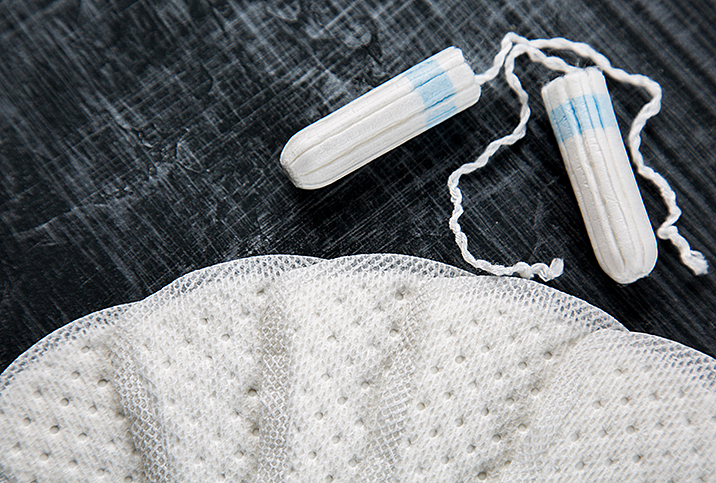What Having Toxic Shock Syndrome Actually Means

Toxic Shock Syndrome (TSS) has generally been associated with using tampons as menstruating women who do so have the largest incidence of TSS, but the rare infection can be triggered in anyone where staph or strep bacteria is present. What causes TSS is not the bacteria itself, but the toxins these bacteria produce, which when released in the bloodstream can threaten your health and even your life.
What causes toxic shock syndrome?
The incidents of TSS in menstruating women before the 1980s were higher than now due to a lack of information. In 1979, there was a near epidemic of TSS infections and deaths. Studies determined that using super-absorbent tampons, especially during light flows, led to infections as the cotton in the tampon can stick and cause abrasions in the vagina. Additionally, it was realized that not changing tampons for long periods stimulated bacterial growth. Starting in the early 1980s, tampons came packaged with informational inserts and incidents of TSS decreased.
Other potential risks include leaving menstrual cups, diaphragms and contraceptive sponges in for too long. Open wounds can be breeding grounds for infection. Illnesses including the flu or pneumonia can lead to TSS. Scratched bumps from chickenpox or incisions from surgeries can become infected. Women who have recently given birth can also contract TSS due to vaginal tearing or episiotomies.
Symptoms of TSS
It’s essential to get help right away if you are at risk for toxic shock syndrome and start to show symptoms. These include having a sudden high fever (102 degrees F and above), vomiting and diarrhea. Low blood pressure, disorientation and confusion may occur. Many times, a sunburn-like rash may present on the palms of your hands and soles of your feet, as well as bloodshot eyes and redness in the throat. Headaches and even seizures are possible.
Diagnosis and treatment
Blood and urine tests are used to determine if you have TSS. A spinal tap, meaning a needle inserted into your spine to drain and test fluid, may be required in some cases. Sometimes a medical professional will take a sample from the site of the infection.
Once diagnosed, you will be hospitalized, most commonly in intensive care, where your breathing and blood pressure will be closely monitored. You will be put on an immediate course of intravenous (IV) fluids and antibiotics and possibly need to be put on a ventilator. As with any condition, treatment is based on the severity of the infection, as well as your age and medical history, and tolerance for treatment options.
Can toxic shock syndrome be prevented?
Essentially, TSS happens when bacteria accumulate, and this accumulation isn’t managed before these bacteria release toxins. Understanding this fundamental cause of TSS makes prevention methods clear. It’s best to avoid super-absorbent tampons during light days and to change your tampon at least every four to six hours. Consider using pads or liners on lighter-flow days. Be sure to remove diaphragms and contraceptive sponges quickly after use and to wash menstrual cups and diaphragms after each use. Thoroughly clean even the smallest cut and monitor it for infection. The same goes for surgical sutures. Cleanliness and awareness are key in preventing a toxic shock infection.
Toxic shock syndrome will progress rapidly if it’s not treated. Shock, organ damage, including heart, liver and kidney failure, amputation and death can result—50 percent of streptococcal cases result in death. If you are exhibiting symptoms, you need to contact your doctor immediately.


















